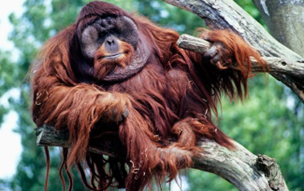Prelims 14-05-2024
Areca Nut
Why in news?
- Recently, the Areca Research Centre at Shivamogga found that the areca nut grown in the Tirthahalli regionas the best quality areca among the varieties grown in Karnataka.
Areca Nut (aka Betel Nut or Supari)
About:
- It is the seed of the Areca palm (Areca catechu L.),and an important cash crop of India.
- It is the fourth most commonly used psychoactive substancein the world after caffeine, nicotine, and alcohol.
- It is used as a key ingredient in several kinds of Smokeless Tobacco (SLT)
- An estimated 600 million people chew it, with southern Asia, especially India, Myanmar, Bangladesh, and Pakistan, being high prevalence areas.
Cultivation:
- Arecanut requires abundant and well-distributed rainfall.
- It grows well within the temperature range of 14-36°C.
- Laterite, red loam, and alluvial soilsare most suited.
- Major states cultivating the areca nut are Karnataka, Kerala, Assam,Tamil Nadu, Meghalaya and West Bengal.
Fusobacterium Nucleatum
Why in news?
- Researchers have observed a notably higher abundance of Fusobacterium nucleatum bacteria in oral tumors compared to the oral cavity of healthy individuals.
Fusobacterium Nucleatum (F. nucleatum)
- It is aGram-negative, anaerobic bacterium that is commonly found in the human oral cavity.
- In the oral cavity, nucleatumis considered a ‘bridging’ organism that can flourish and, along with other microbes, trigger inflammation leading to gum, or periodontal, disease.
- nucleatum is rarely seen in the guts of healthy people. However, in cases of colorectal cancer, the bacteria are found in tumours in the gut, where they help cancer cells escape from the immune system and spread to other parts of the body.
Orangutan
Why in news?
- Orangutan named Rakus in Indonesia used a medicinal plant to treat a wound, the plant, Akar Kuning, helped in wound healing.
About Orangutan
- The name orangutan means “man of the forest”in the Malay language.
- They have a characteristic ape-like shape, shaggy reddish fur and grasping hands and feet.
- They are thelargest arboreal mammal, spending most of their time in trees.
- They are the closest living relatives of humans and they share 96.4% of Human genes and are highly intelligent creatures.
- There are three species of Orangutan – the Bornean, Sumatran and Tapanuli – which differ a little in appearance and behaviour.
- Habitat and Distribution : They can occur up to 1,500m above sea level, most are found in lowland areas and prefer forests in river valleys or floodplains.
- These great apes are only found in the wild on the islands of Borneo and Sumatra.

- Eating habitats : Orangutans mainly eat fruits, such as mangoes, lychees and figs, but they also feed on young leaves, flowers, insects, and even small mammals.
- IUCN Red List status :All three orangutan species are critically endangered
- Importance : They are known as gardeners of the forest. They play a vital role in seed dispersal and in maintaining the health of the forest ecosystem, which is important for people and a host of other animals, including tigers, Asian elephants and Sumatran rhinos.
- Threats : Deforestation and hunting are the biggest threats to orangutans
